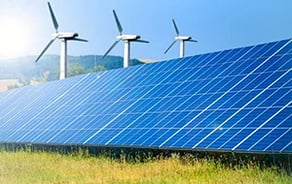Why DER Scalability and Intelligent Coordination Are Critical for Grid Resilience The recent power outages across Spain and Portugal, on April 28, 2025, have highlighted a growing and urgent concern:...
DERs, or distributed energy resources, are “any resource located on the distribution system, any subsystem thereof or behind a customer meter. These resources may include, but are not limited to, rooftop solar panels with smart inverters, electric storage resources, distributed generation, demand response, energy efficiency, thermal storage, and electric vehicles and their supply equipment,” as defined by the Federal Energy Regulatory Commission (FERC). Distributed energy resources (DERs) are a fast-growing category of technologies that can provide power and manage electricity demand. They provide cleaner, less expensive energy solutions to consumers by handling adverse grid events with greater resilience.

DERs include timing programs such as smart thermostats and water heaters; batteries that absorb or release energy on command; and other technologies like smart appliances and electric vehicles. Their value proposition is in altering such behaviors in exchange for compensation for their vendors or aggregators. They can be small-scale technologies as well as larger ones that involve aggregating DERs into groups called "virtual power plants."
Grid operators and utility planners benefit from DERs in several ways: they can be deployed within months instead of over five years as would be required for traditional grid infrastructure investments; they are often smaller than traditional generation installations; and they are targeted at solving specific problems anywhere across the electric ecosystem. DERs are generally installed by consumers or businesses to save money on their electricity bills, but they can also be used to address specific challenges or opportunities anywhere across the grid. For example, they can be used to address highly location-specific issues on the distribution circuit level. They can also prove beneficial for employee convenience, social goals, and more.
With tens of millions of DERs entering the landscape, it is expected that the need for monitoring, communications and command transactions will soon number in the hundreds of millions, and rapidly expand into the billions of transactions well before the end of the decade.
Credit: Peter Kelly-Detwiler, The Growth of Distributed Energy Resources
